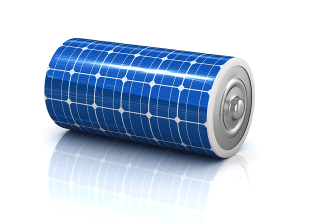 Up to 200,000 business and household customers in New South Wales face extended blackouts of up to a week, or even more, following the dramatic storms in the Sydney region and to its north.
Up to 200,000 business and household customers in New South Wales face extended blackouts of up to a week, or even more, following the dramatic storms in the Sydney region and to its north.
And the impact could have as galvanising an effect as Hurricane Sandy had on the New York region of the United States – causing utilities, business and household customers to consider battery storage and even micro grids.
NSW has more than 260,000 households with rooftop solar, but any houses with solar on their roof would still be without power, because their inverters are usually connected to the grid. So when the grid goes down, the inverters go down too.
The only way to be able to use that solar power is to have battery storage and a special battery storage inverter, which effectively creates its own mini grid, and can operate on its own when the main grid goes down.
“Every storm we get a surge of inquiries,” says Glen Morris, the vice president of the Australian Energy Storage Council, and the owner of a solar-storage business. (Morris also lives in an off-grid community).
“People realise that if they have got solar PV and a grid connected inverter it doesn’t work when the power goes down, so they must have storage.”
Muriel Watt, head of energy policy at renewable energy consultants IT Power Australia, says the number of customers looking at battery storage were likely to increase dramatically as a result of the blackout, and when an estimated 146,000 households in NSW come off their premium 60c/kWh tariff next year.
“With so many households now having PV, it is making even more sense for them to consider adding storage and an inverter which allows them to switch to off-grid mode,” Watt said.
“This would at least keep the lights on and prevent the ‘fridge defrosting. Japanese people have been very aware of this option after losing power for weeks after the Kobe earthquake, but prices for PV and batteries have fallen considerably since then.
“Cost effectiveness is never the only consideration for household investments – emergency power would rate quite high on the list if we are to have more frequent severe weather events.”
As for costs, Morris says it is currently making a 10-15 year payback. But like Watt, he says that is not the main consideration.
 But, he notes, the cost of battery storage is coming down quickly – around 20 per cent in 2014 for lithium-ion batteries, and another 25 per cent fall expected in 2015, battery manufacturers tell him. That is the same price trajectory as solar modules over the past 5 years.
But, he notes, the cost of battery storage is coming down quickly – around 20 per cent in 2014 for lithium-ion batteries, and another 25 per cent fall expected in 2015, battery manufacturers tell him. That is the same price trajectory as solar modules over the past 5 years.
How much storage was needed depended on what the customer needed. One household recently installed a 4kWh battery storage system, but because they were careful with their energy use, that was enough for a full day.
Many households or businesses would want storage just to ensure the TV, lights and radio are kept on, and possibly the fridge. Others use storage to bank the output from their solar panels and use later in the day.
That’s because new owners are either getting paid little or nothing to export back to the grid, or are prevented from doing so.
Businesses, particularly those with refrigeration needs who find they are paying $40,000 to $50,000 for a back up generator with high maintenance, are also finding rooftop solar and battery storage is a cheaper and more effective alternative.
Some forecasts suggest that within a few years, it will be economic for households in city suburbs to disconnect from the grid. Some suggest one-third may do so within the next few decades.
Right now, though, Morris says even the market operator does not know how many battery storage systems are in place. That’s because most people installing storage are adding it to pre-existing solar systems.
Michael Anthony, from Solar360, says the bulk of his company’s business is now centred around storage. He says about 40-60 new storage systems are being installed each month, much of it in regional areas, but also in the city – both for businesses and households.
“Most dealers are trying to sell just solar, but they haven’t understood that adding storage gives a better result.” Anthony says the levelised cost of energy for added battery storage systems is at the same level as grid power.
Ironically, Morris was speaking from the northern NSW town of Ballina, where he was hosting a course on battery storage for technicians from the local network operator.
The main grid operator in the Sydney, Hunter region, Ausgrid had to put out a warning on Wednesday in response to reports that desperate households and businesses – facing another week without power – were rushing to hardware stores to buy generators.
Morris said this was both illegal, and stupid. Generators could only work when powering appliances directly. If they are fed into a household wiring system, they can be incredibly dangerous, both for the occupants and network linesmen.
Addendum: Solar households in NSW should be be warned that adding battery storage may invalidate the solar premium tariff. The tariff expires in 2016, from which time any payments for exports to the grid will be “voluntary” by the retailers.






